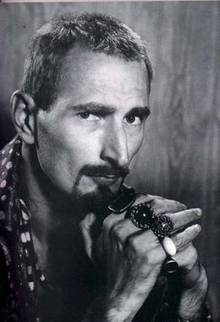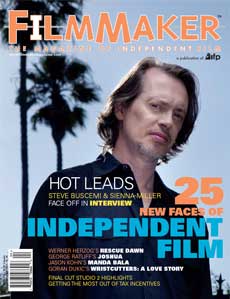Related Research Articles

Gilda Susan Radner was an American actress, comedian, writer, and singer. Radner was one of the seven original cast members of the "Not Ready For Prime Time Players" on the NBC sketch comedy series Saturday Night Live from its inception in 1975 until her departure in 1980. In her routines on SNL, she specialized in parodies of television stereotypes, such as advice specialists and news anchors. In 1978, Radner won an Emmy Award for her performances on the show. She also portrayed those characters in her highly successful one-woman show on Broadway in 1979. Radner's SNL work established her as an iconic figure in the history of American comedy.

Sadism and masochism, known collectively as sadomasochism, are the derivation of pleasure from acts of respectively inflicting or receiving pain or humiliation. Practitioners of sadomasochism may seek sexual pleasure from their acts. While the terms sadist and masochist refer respectively to one who enjoys giving and receiving pain, some practitioners of sadomasochism may switch between activity and passivity.

Autofellatio is a form of masturbation involving the oral stimulation of one's own penis. Only a limited number of males are physically capable of performing fellatio on themselves due to the flexibility required.

Gene Wilder was an American actor, comedian, writer and filmmaker known mainly for his comedic roles, but also for his portrayal of Willy Wonka in Willy Wonka & the Chocolate Factory (1971). He collaborated with Mel Brooks on the films The Producers (1967), Blazing Saddles (1974) and Young Frankenstein (1974), and with Richard Pryor in the films Silver Streak (1976), Stir Crazy (1980), See No Evil, Hear No Evil (1989) and Another You (1991).

Blonde stereotypes are stereotypes of blonde-haired people. Sub-types of this stereotype include the "blonde bombshell" and the "dumb blonde". Blondes are stereotyped as less intelligent than brunettes, which has lead to the popularity of blonde jokes made on these premises. However, research has shown that blonde women are not less intelligent than women with other hair colors.

Homoeroticism is sexual attraction between members of the same sex, including both male–male and female–female attraction. The concept differs from the concept of homosexuality: it refers specifically to the desire itself, which can be temporary, whereas "homosexuality" implies a more permanent state of identity or sexual orientation. It has been depicted or manifested throughout the history of the visual arts and literature and can also be found in performative forms; from theatre to the theatricality of uniformed movements. According to the Oxford English Dictionary, it is "pertaining to or characterized by a tendency for erotic emotions to be centered on a person of the same sex; or pertaining to a homo-erotic person."

Jack Smith was an American filmmaker, actor, and pioneer of underground cinema. He is generally acclaimed as a founding father of American performance art, and has been critically recognized as a master photographer.
Structural film was an avant-garde experimental film movement prominent in the United States in the 1960s and which developed into the Structural/materialist films in the United Kingdom in the 1970s.

Flaming Creatures is a 1963 American experimental film directed by Jack Smith. The film follows an ensemble of drag performers through several disconnected vignettes, including a lipstick commercial, an orgy, and an earthquake. It was shot on a rooftop on the Lower East Side on a very low budget of only $300, with a soundtrack from Smith's roommate Tony Conrad. It premiered April 29, 1963 at the Bleecker Street Cinema in Greenwich Village.
Cinemation Industries was a New York City-based film studio and distributor owned and run by exploitation film producer Jerry Gross.

Ken Jacobs is an American experimental filmmaker. His style often involves the use of found footage which he edits and manipulates. He has also directed films using his own footage.
Heritage film is a critical term to refer to a cluster or cycle of late 20th-century British films that were argued to depict the United Kingdom of the pre-World War II decades in a nostalgic fashion. Although this term was originally used to discuss the film genre polemically, its use has broadened out, and it is now also used more loosely to refer to period films with high-quality visual production values, including those produced in France, other European countries and beyond.

Filmmaker is a quarterly publication magazine covering issues relating to independent film. The magazine was founded in 1992 by Karol Martesko-Fenster, Scott Macaulay and Holly Willis. The magazine is now published by the IFP, which acts in the independent film community.

Chick flick is a slang term, sometimes used pejoratively, for the film genre catered specifically to women's interests, and is marketed toward women demographics. They generally tend to appeal more to a younger female audience and deal mainly with love and romance. Although many types of films may be directed toward a female audience, the term "chick flick" is typically used only in reference to films that contain personal drama and emotion or themes that are relationship-based. Chick flicks often are released en masse around Valentine's Day. Feminists such as Gloria Steinem have objected to terms such as "chick flick" and the related genre term "chick lit", and a film critic has called it derogatory.
The Millennium Film Workshop is a non-profit media arts center located in New York City. It is dedicated to the exhibition, study, and practice of avant-garde and experimental cinema. It was also where the St. Mark's Poetry Project began. Ken Jacobs stated in 2013 that he chose the name Millennium "...because it would have to be that to actually give out equipment, education, space to work in, etc. for free. Dictionary definition: 'A hoped for period of joy, serenity, prosperity and justice.' "
Neofeminism describes an emerging view of women as becoming empowered through the celebration of attributes perceived to be conventionally feminine, that is, it glorifies a womanly essence over claims to equality with men. It is a term that has come into use in the early 21st century to refer to a popular culture trend, what critics see as a type of "lipstick feminism" that confines women to stereotypical roles, while it erodes cultural freedoms women gained through the second-wave feminism of the 1960s and 1970s in particular.

Piero Heliczer was an Italian-American poet, publisher, actor and filmmaker associated with the New American Cinema.
A Gothic film is a film that is based on Gothic fiction or contains Gothic elements. Since various definite film genres—including science fiction, film noir, thriller, and comedy—have used Gothic elements, the Gothic film is challenging to define clearly as a genre. Gothic elements have also infused the horror film genre, contributing supernatural and nightmarish elements. To create a Gothic atmosphere, filmmakers have sought to create new camera tricks that challenge audiences' perceptions. Gothic films also reflected contemporary issues. A New Companion to The Gothic's Heidi Kaye said "strong visuals, a focus on sexuality and an emphasis on audience response" characterize Gothic films like they did the literary works. The Encyclopedia of the Gothic said the foundation of Gothic film was the combination of Gothic literature, stage melodrama, and German expressionism.

A sex symbol or icon is a person or character widely considered sexually attractive and often synonymous with sexuality.
References
- ↑ Snow, Michael (1994). The Collected Writings of Michael Snow. Wilfrid Laurier Univ. Press. p. 285. ISBN 978-0-88920-243-6.
- 1 2 3 Pierson, Michele; James, David E.; Arthur, Paul (19 April 2011). Optic Antics: The Cinema of Ken Jacobs. Oxford University Press. p. 27. ISBN 978-0-19-538497-0.
- 1 2 Schneider, Steven Jay (1 October 2012). 1001 Movies You Must See Before You Die 2012. Octopus Publishing Group. p. 409. ISBN 978-1-84403-733-9.
- ↑ Moon, Michael (January 1998). A Small Boy and Others: Imitation and Initiation in American Culture from Henry James to Andy Warhol . Duke University Press. p. 88. ISBN 0-8223-2173-4.
- ↑ Radner, Hilary; Luckett, Moya (1999). Swinging Single: Representing Sexuality in the 1960s. University of Minnesota Press. p. 69. ISBN 978-0-8166-3351-7.